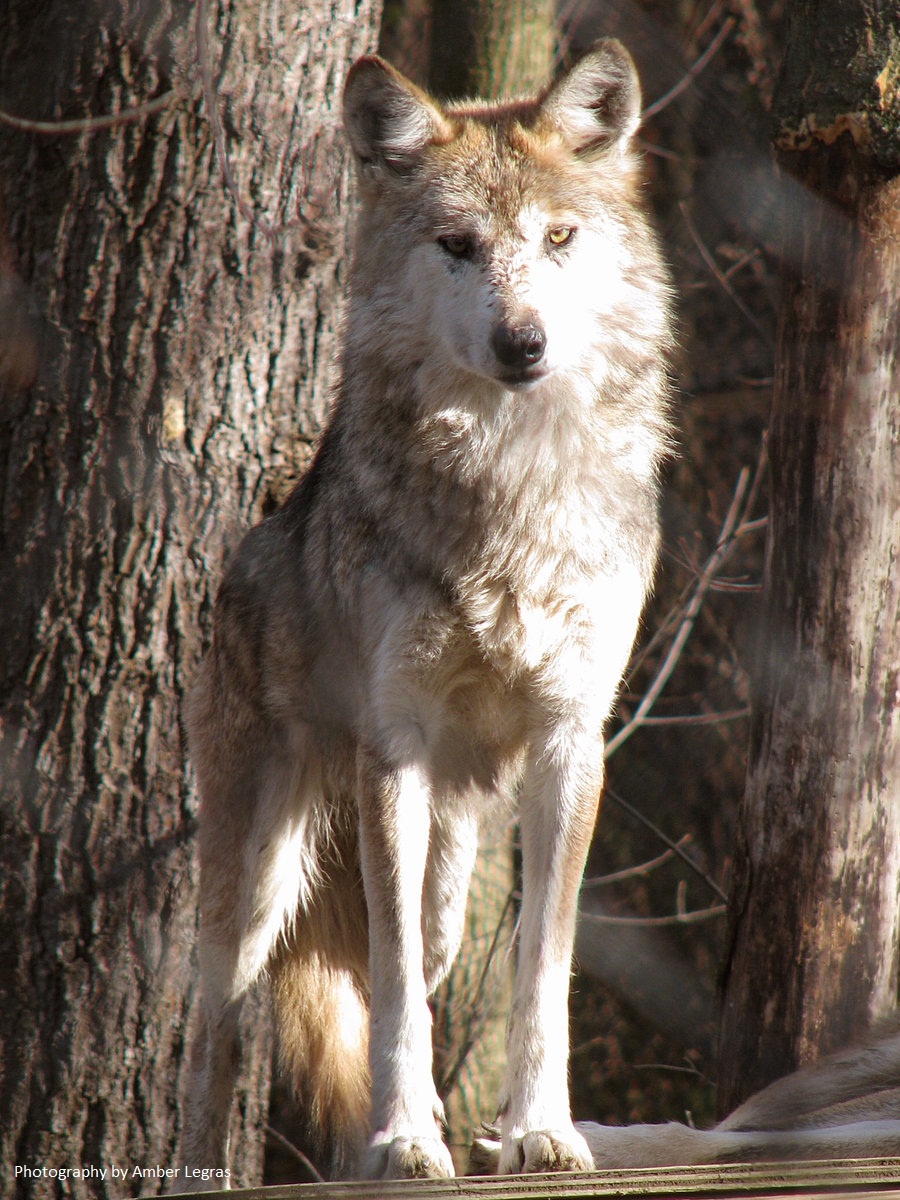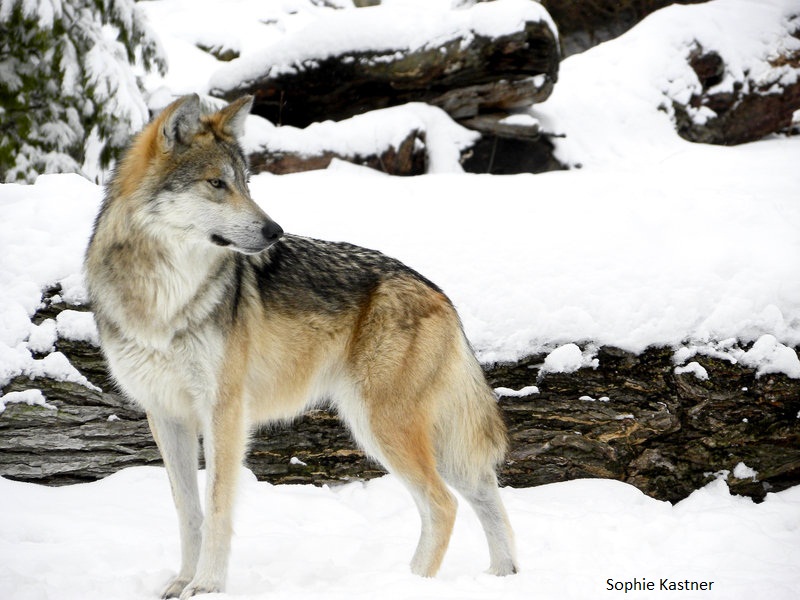24
Sep
In the News: No Puppy Love in NM

Game Commission to reconsider releases of Mexican wolves, including pups
Somewhere amid the Big Bad Wolf propaganda, the story of Mowgli gets lost. Remember Mowgli, the man-cub raised by wolves? That tendency of wolves to take in something not quite their own was what the US Fish and Wildlife Service hoped to utilize this summer when it applied to New Mexico’s Department of Game and Fish for a permit to release two adult wolves and up to 10 pups to “cross-foster” into existing wild wolf dens. The practice places captive-bred pups with wild parents who have pups within a week of the same age.
“The ultimate goal of that is for us to get new genetic material out into the field population, and also have a proven wild female or wild pack be able to raise those pups,” says Jeff Humphrey, public affairs specialist with the Fish and Wildlife Service’s Arizona office. “So you’ve got a female or a pack that has a good track record of preying on elk not cattle, and we can insert those pups so that they could become properly behaved wild pups and contribute their genetics a year, two years down the road to the larger wild population.”
Imagine, as many as 10 wolf puppies tumbling around the Gila, learning to cull sick elk from herds, keep ungulates moving so they don’t overgraze stream banks and compromise habitat for fish and aquatic life and generally make for a healthier ecosystem.
But New Mexico’s Department of Game and Fish said no.
“We don’t know what the end game is for the Mexican wolf population, and so at this point, the department is not in support of the Mexican Wolf Program,” New Mexico Game and Fish Director Alexa Sandoval said during the May 7 meeting of the state Game Commission.
Since the Game Commission guides the policies of Game and Fish, the US Fish and Wildlife Service has asked the commission to reconsider the director’s ruling during its Sept. 29 meeting in Albuquerque. It’s a bit of a moot point, pup season having come and gone, but the agency’s hope is that getting this year’s applications approved will pave the way for next year.
This rarest subspecies of wolf has taken almost a decade longer than anticipated to limp toward the population goal of 100, set before their initial release into the wild in 1998. New Mexico fought the release then, and reintroduced wolves were set loose only in Arizona. They have since spread as far into the state as just south of I-40, west of Albuquerque, roaming 4.4 million acres over New Mexico’s Gila National Forest and Arizona’s Apache National Forest.
The US Fish and Wildlife Service recently set a new population goal of up to 325, a number still not considered “recovered” on a level that would see the Mexican wolf delisted, but a healthy step in that direction from a goal that sat at 100 for more than 30 years. The agency is revisiting the entire plan for Mexican wolf management and expects to have that finalized by the end of 2017. Its concern now has less to do with the headcount in the wild and more to do with the fact that almost all of the wolves in the wild are about as genetically similar as siblings.
“We have the need for increased releases of wolves so that we can sort of dilute the relatedness of the population,” says Maggie Dwire, assistant Mexican wolf recovery coordinator for the Fish and Wildlife Service, “so that when animals disperse, they have a chance of meeting an animal that’s not related to them so then gene diversity can increase and inbreeding can go down.”
“The time to infuse that new genetic diversity is now—that’s the sense of urgency we have in working with New Mexico for permitting and bringing wolves to the population,” Humphrey says.
The Turner Endangered Species Fund also approached the Game Commission this year for a renewed permit to hold Mexican wolves in captivity at Ladder Ranch, and their application was also denied. That ranch is adjacent to the Mexican wolf recovery area and would have eased cross-fostering. Pups would essentially be moved next door, instead of across state lines.
This summer, two operations to cross-foster in Arizona fizzled out, one when the adult wolves expected to have pups failed to produce any and the other when the female wolf relocated her den before the new pups could arrive from Missouri and managers couldn’t find it in time.
“The clock is the Mexican wolf’s enemy, and every generation that passes, it’s a little less genetically robust than it was before the clock started,” Mike Phillips, executive director of the Turner fund, told commissioners in May.
A few months later, Joy Nicholopoulos, the deputy regional director of the US Fish and Wildlife Service’s Southwest Office, told the commissioners that delaying the releases now means more wolves will need to be released later.
The window for cross-fostering this year has passed, but the USFWS would like to make sure next spring’s pups see a more welcome reception. The pendulum doesn’t seem to be swinging that direction, though.
During the June Game Commission hearing, public comment pointed to an anti-carnivore ethos taking over the commissioners, who were then discussing increasing quotas for bear hunts and allowing ranchers and hunters to trap cougars, both of which they approved. During the public comment, one person quoted Wildlife Management, the book by legendary conservationist, hunter and founder of the New Mexico Wildlife Federation, Aldo Leopold: “‘Harmony with land is like harmony with a friend. You cannot cherish his right hand and chop off his left. That is to say, you cannot love game and hate predators.’ This push to kill ever more cougars and bears along with the Ladder Ranch wolf decision comes very close to looking like predator hatred.”
This article was published in the Santa Fe Reporter.
~~~~~~~~~~~~~~~~~~~~~~~~
Please take a stand for Mexican wolf recovery with a letter to the editor!
The NM Game Commission is trying to halt the release of all Mexican gray wolves in New Mexico. We need to let the public know more about this outrageous action to sabotage lobo survival. Please take a stand now with a letter to the editor!
The letters to the editor page is one of the most widely read, influential parts of the newspaper. One letter from you can reach thousands of people and will also likely be read by decision-makers. Tips and talking points for writing your letter are below, but please write in your own words, from your own experience.
Talking Points
- The actions of Governor Martinez’s Game Commission to thwart the recovery of Mexican gray wolves are childish and violate the public trust.
- In recent polls, the great majority of New Mexicans support lobo recovery.
- Folks should show up at the Commission meeting on the 29th and be heard — the wolves can’t speak so we must speak for them.
- At last official count, only 110 Mexican gray wolves were found in the wild, making them one of the most endangered wolves in the world. Actions such as NM Game Commission’s unwarranted denial of release permits will only further complicate efforts to recover these rare wolves.
- The New Mexico Game Commission, under Governor Martinez, has clearly become a tool of a small anti-wolf minority and its actions are out of touch with the majority of New Mexico voters who support wolf recovery and understand the important role top carnivores play in our ecosystems.
- Wolves are a benefit to the West and are essential to restoring the balance of nature. Actions to interfere with the Mexican gray wolf’s survival and recovery cheat us all of the opportunity to have wolves returned to their critical natural role.
- Mexican gray wolves are unique native animals. They are the rarest, most genetically distinct subspecies of gray wolf in North America. State and federal agencies should do all in their power to move these special wolves away from extinction towards recovery. Instead, Martinez’s Game Commission has chosen play politics with the wolves’ future.
- Wolves generate economic benefits – a University of Montana study found that visitors who come to see wolves in Yellowstone contribute roughly $35.5 million annually to the regional economy. New Mexico stands to benefit from wolf-related tourism, but only if the Mexican wolf reintroduction is allowed to succeed.
- The state is putting up roadblocks that could doom our lobos, but the feds are also dragging their feet on recovery.
- Cross-fostering is a long shot that requires all sorts of factors to align perfectly. Cross-fostering alone cannot come close to saving the wolves — more adult wolves must be released from captivity.
Letter Writing Tips
Make sure you:
- Thank the paper for this excellent article and make sure to reference the article in your LTE.
- Submit your letter as soon as possible. The chance of your letter being published declines after a day or two since the article was published.
- Do not repeat any negative messages, such as “so and so said that wolves kill too many cows, but”¦” Remember that those reading your letter will not be looking at the article it responds to, so this is an opportunity to get out positive messages about wolf recovery rather than to argue with the original article.
- Keep your letter brief, no more than 200 words. Letters will be edited for space and clarity.
- Include something about who you are and why you care: E.g. “I am a mother, outdoors person, teacher, business owner, scientific, religious, etc.” Don’t be afraid to be personal and creative.
- Provide your name, address, phone number and address. The paper won’t publish these, but they want to know you are who you say you are.
Thank you for speaking out for Lobos!

Photo credit: Amber Legrass & Sophie Kastner
______________________________________________________________________________



